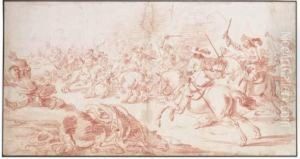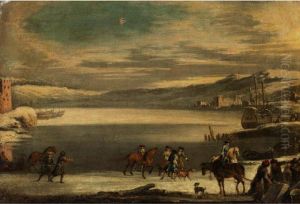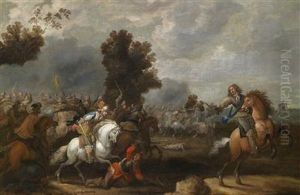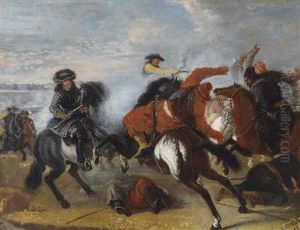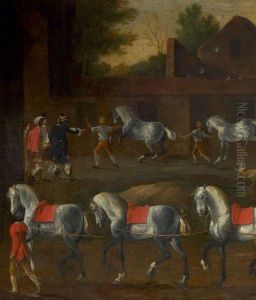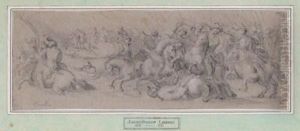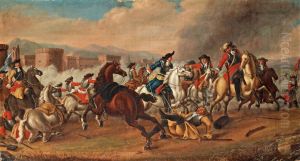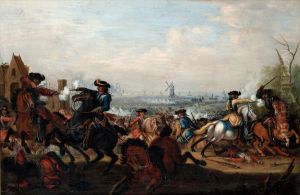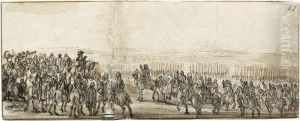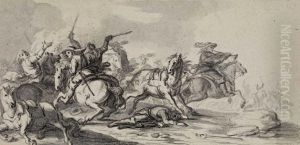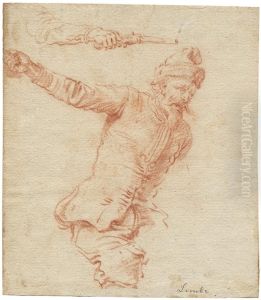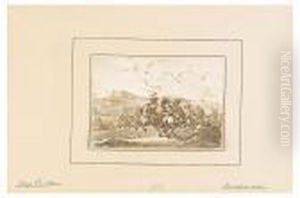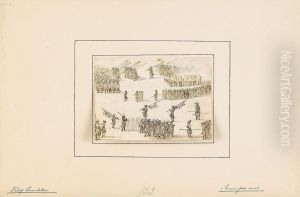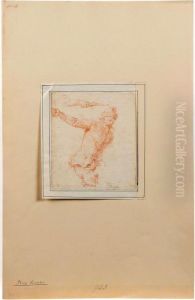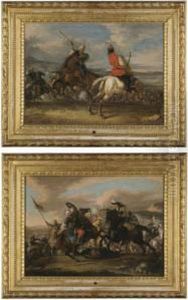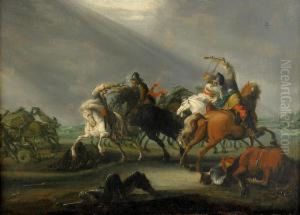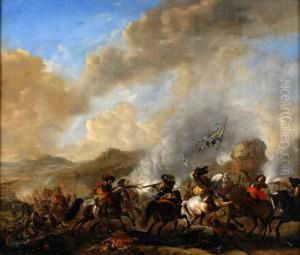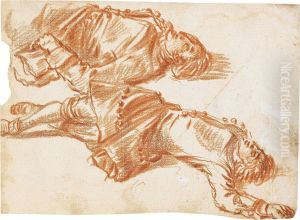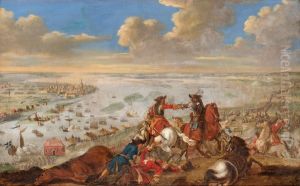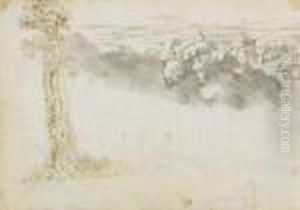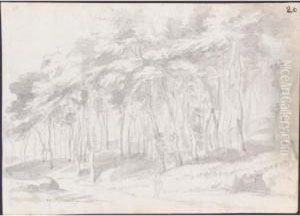Johann Philipp Lembke Paintings
Johann Philipp Lembke was a German painter known primarily for his work as a portraitist and painter of historical scenes. Born in 1631 in Hamburg, Germany, Lembke's upbringing and initial training in the arts remain somewhat obscure, as there is limited documentation about his early life. However, it is known that he traveled extensively throughout Europe, which allowed him to study under various masters and be influenced by the different artistic styles prevalent during the 17th century.
Lembke's travels took him to countries such as Italy, where he was particularly influenced by the Italian Baroque movement. This influence is evident in his use of dramatic lighting and rich, vivid colors, which became characteristic elements of his painting style. After spending significant time in Italy, he returned to Germany, where he continued to develop his skills and began to establish his reputation as a portrait painter.
In addition to his portraiture, Lembke is also known for his historical paintings, which often depicted scenes from ancient history and mythology. His work in this genre demonstrates a keen interest in narrative and a meticulous attention to detail, which helped to convey the grandeur and drama of the stories he chose to represent.
Throughout his career, Lembke received various commissions from the nobility and other prominent figures of his time, which allowed him to gain a certain level of prestige and financial stability. His portraits were particularly appreciated for their elegance and the ability to capture the essence and character of his subjects.
Johann Philipp Lembke's contributions to the world of art were recognized during his lifetime, and his works were collected by art connoisseurs and patrons. He continued to paint and receive commissions until his death in 1711. Today, his paintings can be found in museums and private collections, where they are valued for their historical significance and artistic merit.
